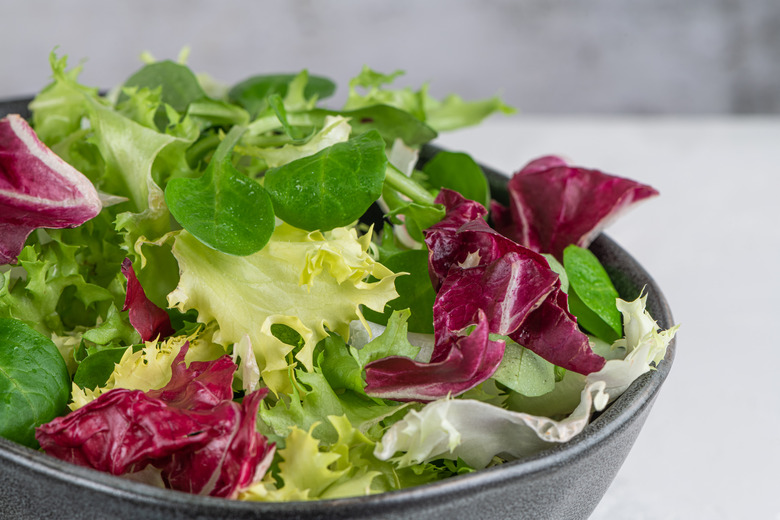How To Read A Food Web
A food web is an illustrative way to read how energy transfers in an ecosystem. Interpreting a food web is straightforward as it is a diagram with arrows showing which species eat which species.
Food webs also depict the transfer of energy between organisms and non-living abiotic factors such as sunlight and carbon.
Trophic Levels
Trophic Levels
Organisms can be divided by how they obtain their energy. The trophic levels can be segregated into producers, consumers and decomposers. Each level is a different type of energy transfer throughout the food web.
**Producers** make their own energy via photosynthesis, chemosynthesis and other autotrophic pathways. **Consumers** make up the next few trophic levels. They feed on other organisms in order to get energy. Primary consumers eat producers while secondary, tertiary and quaternary consumers (with "secondary" "tertiary" etc referencing what tropic level they're on) mostly eat other consumers.
**Decomposers** are considered to be on their own trophic level. They obtain their energy by feeding on dead organisms, which helps transfer nutrients back into the soil for the producers further utilize.
Food Chain Definition
Food Chain Definition
A **food chain** is a simplified version of a food web. A food chain is an energy transfer link between living organisms.
Food chains start with the producers, then moves to the consumers and finishes with the decomposers.
Food Web Definition
Food Web Definition
A food web is more detailed than a food chain. Food webs take into consideration all food chains in an ecosystem. It makes more sense to study food webs as opposed to food chains because they take into consideration more complex species interactions within all of the trophic levels.
Scientists use food webs to identify links between the organisms. Understanding food webs helps biologists better understand key species in a given ecosystem. It also helps them understand how population changes in that ecosystem will affect the other organisms in the food web.
Apex predators, which are at the top of the food chain and are the highest trophic level in an ecosystem, have a top-down effect on the rest of the food chain. Removing apex predators from a food web has a snowball effect on the populations of species lower in the web. Removing the producers has a top-up effect as it removes the essential base energy from the equation.
Food Web and Food Chain Reading
Food Web and Food Chain Reading
Surprisingly, only about 10 percent of energy is transferred through each link in the food web. The arrows or lines on food web diagrams serve to illustrate the energy transmission from one of the trophic level subcategories to the next.
The categories from highest energy producer to lower are:
- Primary producers.
- Primary consumers.
- Secondary consumers.
- Tertiary consumers.
- Quaternary consumers.
- Apex predators.
- Decomposers.
Plants, as primary producers, are at the bottom of the food web as they transform the sun's energy into food. The arrows then point to all the herbivores that eat the plants.
Next, the arrows lead from each herbivore to the omnivore or carnivore that eats them. The arrows then move around the food web until they reach the apex predator, which is consumed by the decomposers.
Example of a Food Web
Example of a Food Web
In the ocean, phytoplankton, a unicellular form of microalgae, are the photosynthetic, primary producers at the bottom of the food web. These microalgae are eaten by a wide variety of primary consumer species from zooplankton to small fish. The primary consumers then become prey to omnivorous fish classed as secondary consumers.
Tertiary consumers, such as squid (Teuthida) feed on the primary producer microalgae, primary consumer fish and larger secondary consumer fish. Quaternary consumers such as the bluefin tuna (Thunnus thynnus) eat the fish at a tertiary consumer level. Apex predators, like sharks, are carnivores at the top of the web. Humans are often placed on the highest point of a food web as we often kill or eat other apex predators.
The decomposers are typically found on the sea floor as they eat what has fallen to the ground. Ocean decomposers include the fungi Lindra and Lulworthia, bacteria like Vibrio furnissii, nematodes, worms and amoebas. By breaking down dead animals and algae, decomposers help release phosphorous, nitrogen and potassium back into the ocean.
Cite This Article
MLA
Jerrett, Adrianne. "How To Read A Food Web" sciencing.com, https://www.sciencing.com/read-food-5717227/. 22 November 2019.
APA
Jerrett, Adrianne. (2019, November 22). How To Read A Food Web. sciencing.com. Retrieved from https://www.sciencing.com/read-food-5717227/
Chicago
Jerrett, Adrianne. How To Read A Food Web last modified August 30, 2022. https://www.sciencing.com/read-food-5717227/
